All products featured are independently chosen by us. However, SoundGuys may receive a commission on orders placed through its retail links. See our ethics statement.
Beyerdynamic M90 PRO X review
February 15, 2022
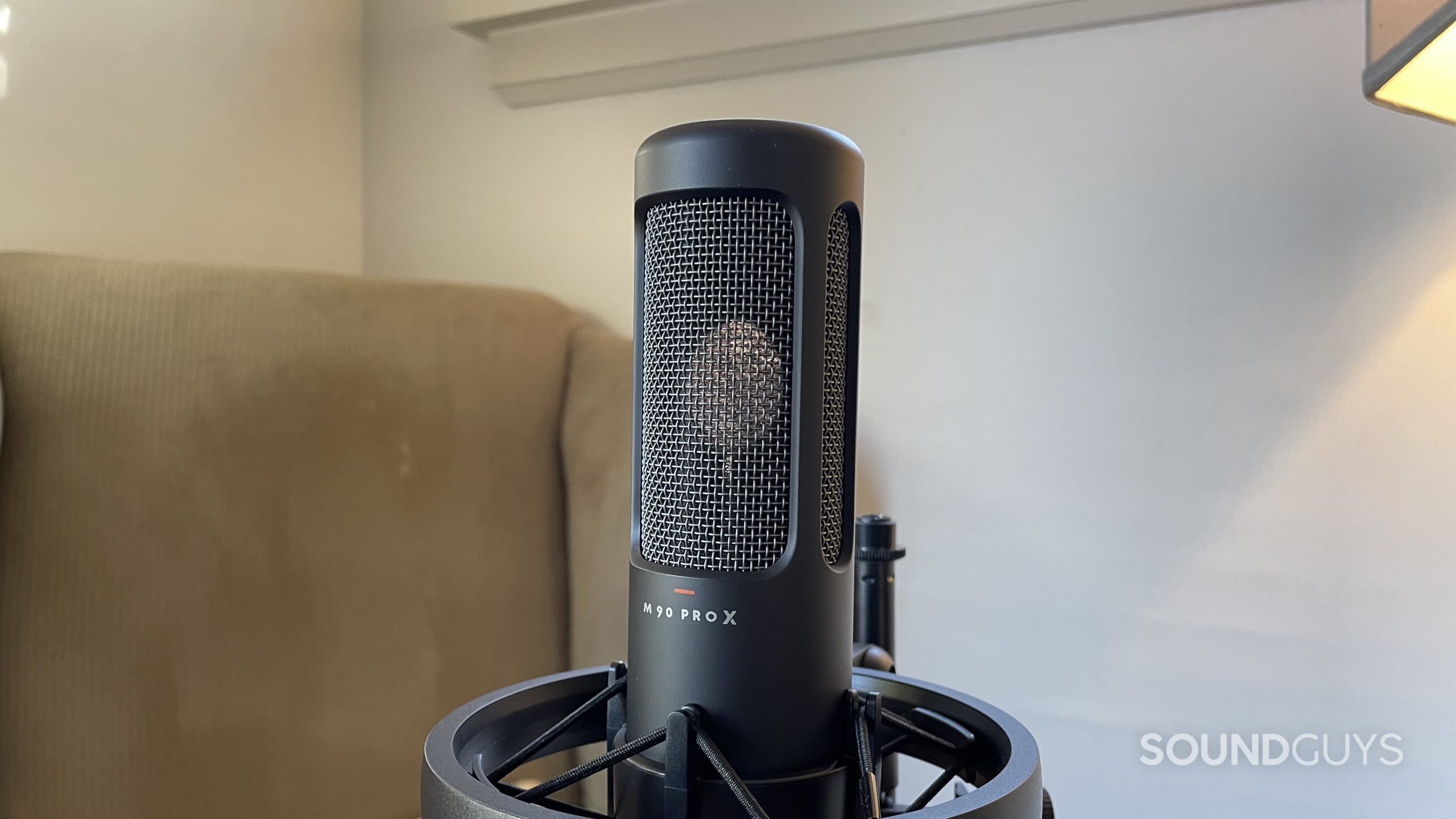
Sensitive friends are great to have around, and the most sensitive friends pay attention to detail and accurately understand you. This is somewhat similar to microphones. Only a very sensitive mic will reliably record the faintest inflections of your voice, and accurately capture how you speak or sing. The Beyerdynamic M90 PRO X highlights even the finest details of a recording, making for an intimate sound.
Let’s see if this new friend is worth the price.
Who is the Beyerdynamic M90 PRO X for?
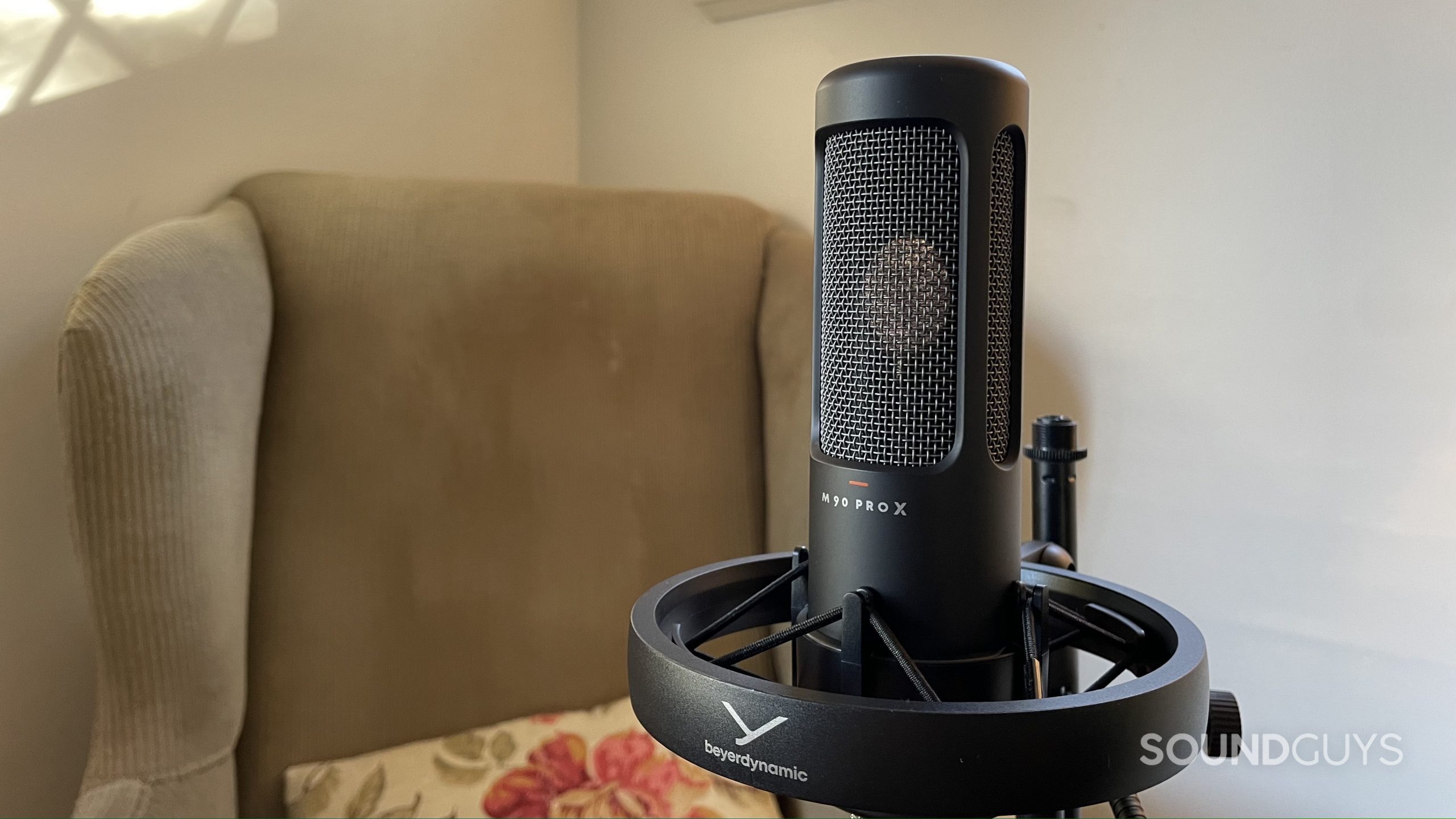
- Vocalists can rest assured that the M90 X PRO condenser microphone will capture their vocal subtleties.
- Acoustic musicians should use this Beyerdynamic mic to make sure they capture quiet transitions along a fretboard.
- The Beyerdynamic M90 PRO X is also great for speech applications, especially if you want to hone in on quiet sounds, like those used in ASMR.
What’s it like to use the Beyerdynamic M90 PRO X?
It’s easy to use the Beyerdynamic M90 PRO X, and all you need is an audio interface with XLR mic inputs. The microphone body lacks any buttons or LEDs, and like the DT 900 PRO X and DT 700 PRO X headphones released alongside it, the M90 PRO X means business.
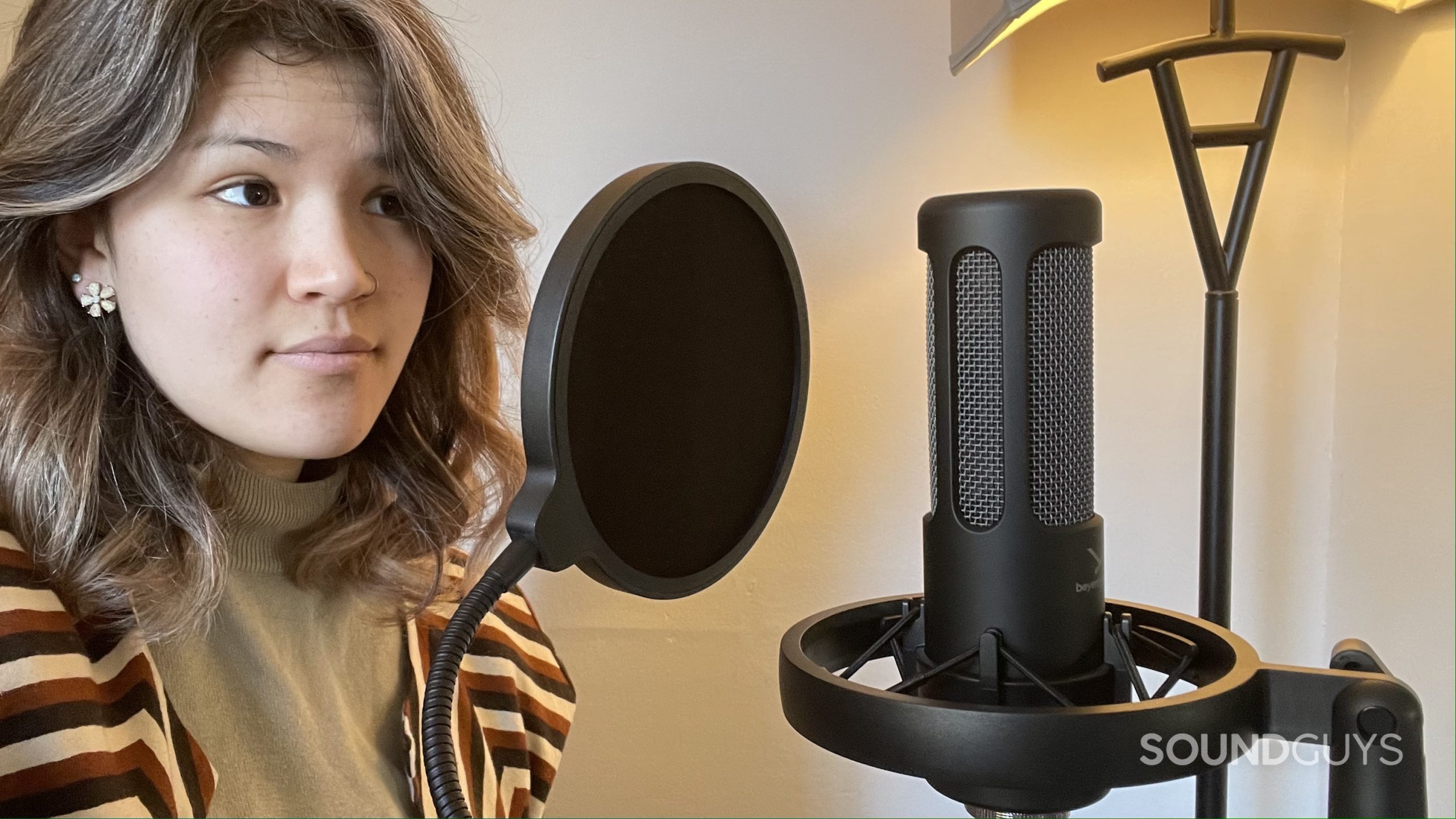
The Beyerdynamic M90 PRO X package includes the microphone, an elastic shock mount, a 5/8-inch thread adapter, a detachable pop filter, and a carrying pouch. The mic is lightweight but has a reliable all-metal build that looks pretty swanky. It has grilles all around its capsule, but it picks up sound exclusively from the front, in accordance with the cardioid polar pattern.
There isn’t an easy way to set up the microphone without the included elastic shock mount, but you’ll want to use the shock mount anyway to minimize handling noise and rumble from the floor. Its bulky structure may make it a little difficult to place it exactly where you want it (like in front of your guitar’s sound hole), but you still get enough freedom of movement with the adjustable hinge. You can also rotate the mic inside of the mount to face any direction. If you have a microphone stand with a boom arm, you should have no problem positioning the mic exactly where you want it, though it may take a few tries. The included pop filter is an optional attachment and it is easy to position in front of the mic’s capsule.
Tips and tricks for using the M90 PRO X
The M90 PRO X comes with a user manual that includes a frequency response chart. Conveniently, it has a separate curve for a sound source placed 2cm and 1m away from the mic, depicting the effects of sound source proximity on the mic’s response. In general, the closer you get to a directional microphone, the more relative bass frequencies it will pick up, so if you want your singing voice to sound light and fluttery, back up a little bit.
Though the mic comes with a few accessories, the actual microphone doesn’t feature any buttons or switches. It only really does one thing—capture sound accurately—and it is really great at doing its job.
Does the Beyerdynamic M90 PRO X require phantom power?
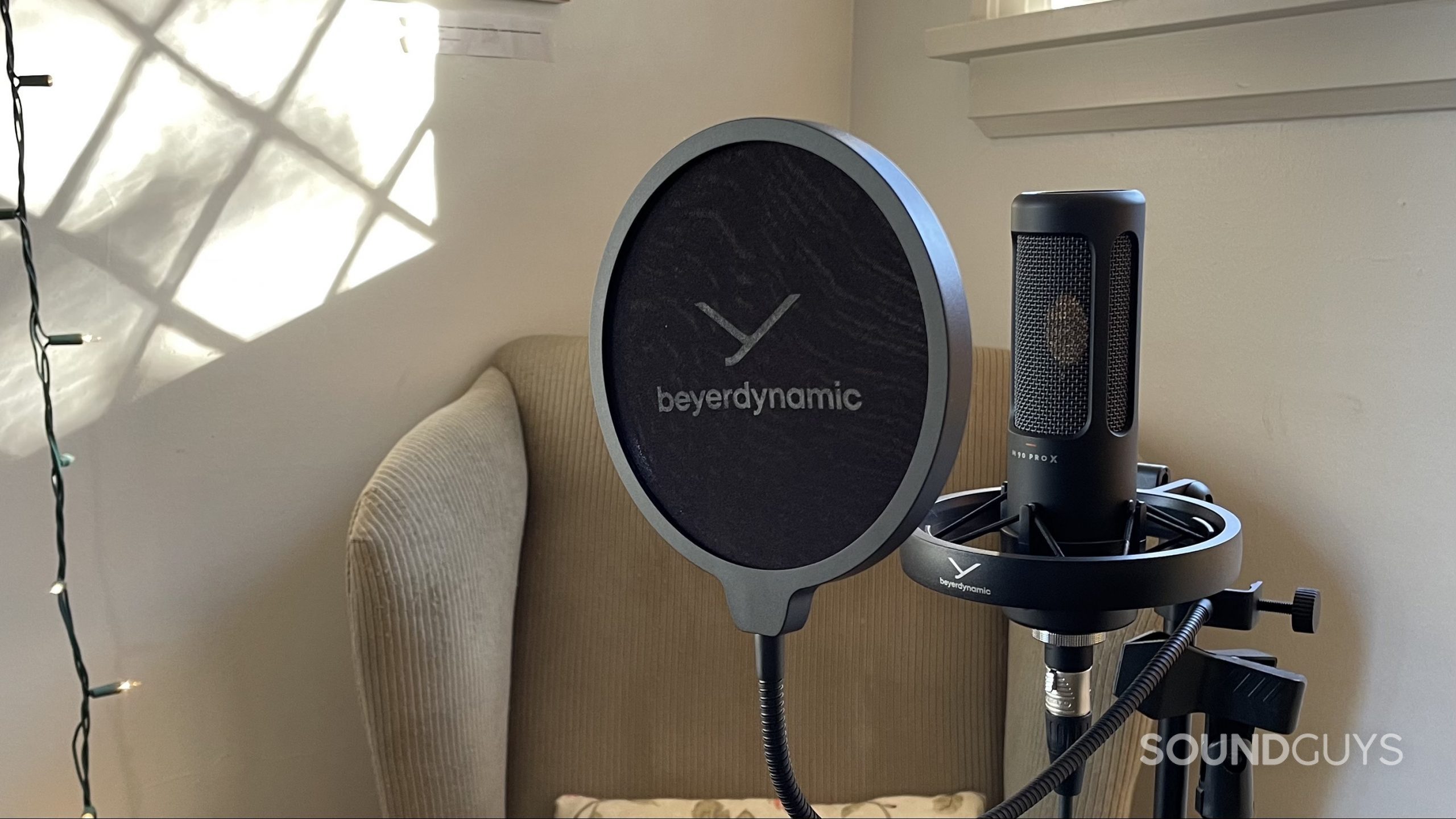
To use the Beyerdynamic M90 PRO X, you’ll need an audio interface or preamp with phantom power. Any level of phantom power from 20 to 52 volts will work, and most commonly you’ll find interfaces with 48 volts. You’re going to need an audio interface to connect the mic to your computer anyways because the mic only has an XLR output. It doesn’t come with a balanced XLR cable or a mic stand, so you’ll need to invest in a couple of third-party accessories for a full setup.
How does the Beyerdynamic M90 PRO X sound?
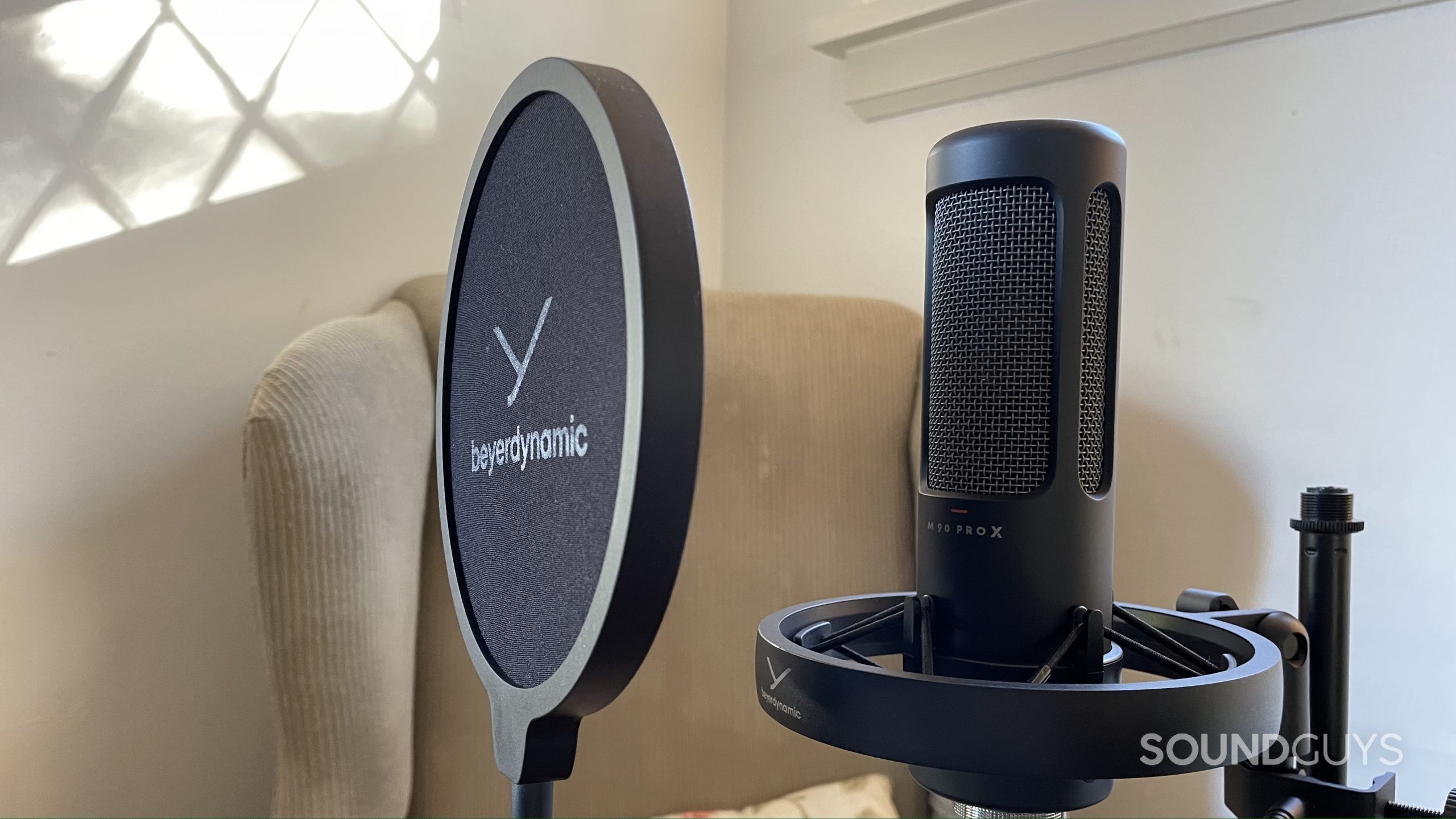
I’m a sucker for a good condenser microphone, and the Beyerdynamic M90 PRO X certainly is one. With its high sensitivity, this mic is designed for recording vocal music and instruments like the acoustic guitar. You can also use this to record speech and, as the sample depicts below, it sounds quite nice.
I appreciate the way the microphone picks up the softness in my speaking voice and doesn’t introduce any harsh plosives (“p” sounds) or sibilance (“s” sounds). This mic does a good job with off-axis sound rejection—you can still clearly understand what I’m saying in the recording below even when my fan is turned on full blast.
Beyerdynamic M90 PRO X speaking sample:
I’m very impressed with the M90 PRO X’s ability to highlight the subtle aspects of my singing voice. As is the case with most mics, I had to turn the gain down quite a bit because my singing voice is considerably louder than my speaking voice, but the mic can handle both belting and soft singing.
Beyerdynamic M90 PRO X singing sample:
The M90 PRO X also highlights the acoustic guitar’s best qualities, picking up its “shiny” sound and keeping those pleasant finger-on-string noises audible but not overpowering. All of these demos are from an acoustically untreated room with wooden walls, floor, and ceiling, and the mic still sounds great.
Beyerdynamic M90 PRO X acoustic guitar sample:
How does the microphone sound to you?
Hold up! Something’s missing:
This section is typically where we display a frequency response chart to show you exactly where the audio output shines and where its deficiencies lie. We will update this review (and many others!) once we’re able with improved sound quality measurements and performance plots. These will be made obvious by an announcement explaining the change, and a new chart aesthetic.
Thank you for bearing with us, and we hope to see you again once we’ve sorted everything out.
Should you buy the Beyerdynamic M90 PRO X?
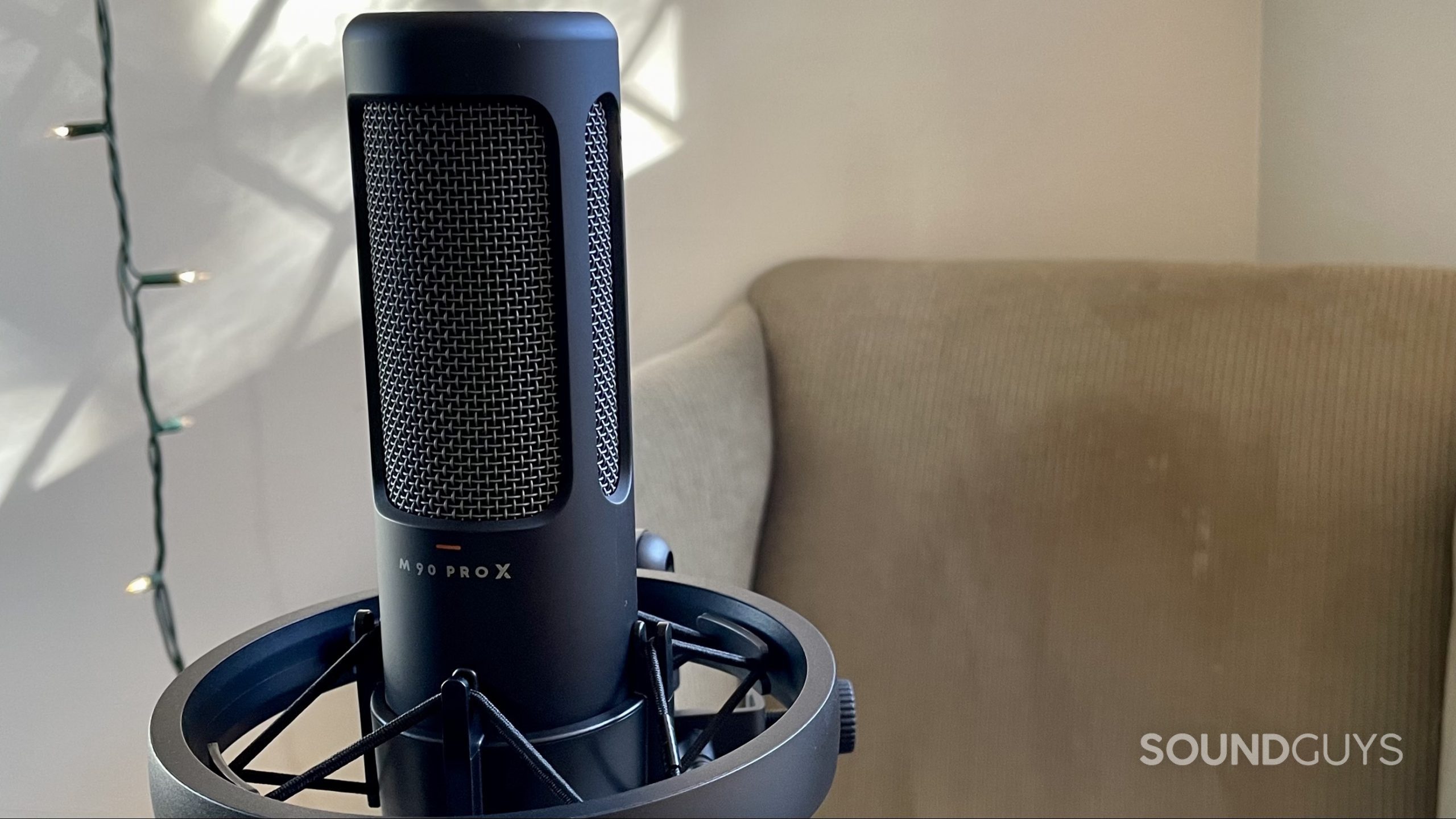
If you can afford the Beyerdynamic M90 PRO X, we recommend it. For its crystal clear sound quality, the price is pretty much what I would expect. This mic can accentuate the most beautiful parts of your voice and instrument-playing, and it’s unlikely to leave anyone feeling discouraged about their talent—it’s fantastic. The inclusion of a shock mount and pop filter are only cherries on top of the pie.
The M90 PRO X isn’t exactly a portable microphone, but it isn’t meant to be taken around town. This is a studio mic through and through, and will perform best in an acoustically treated room, though my recordings sound pretty darn good for having been recorded in a wooden bedroom.
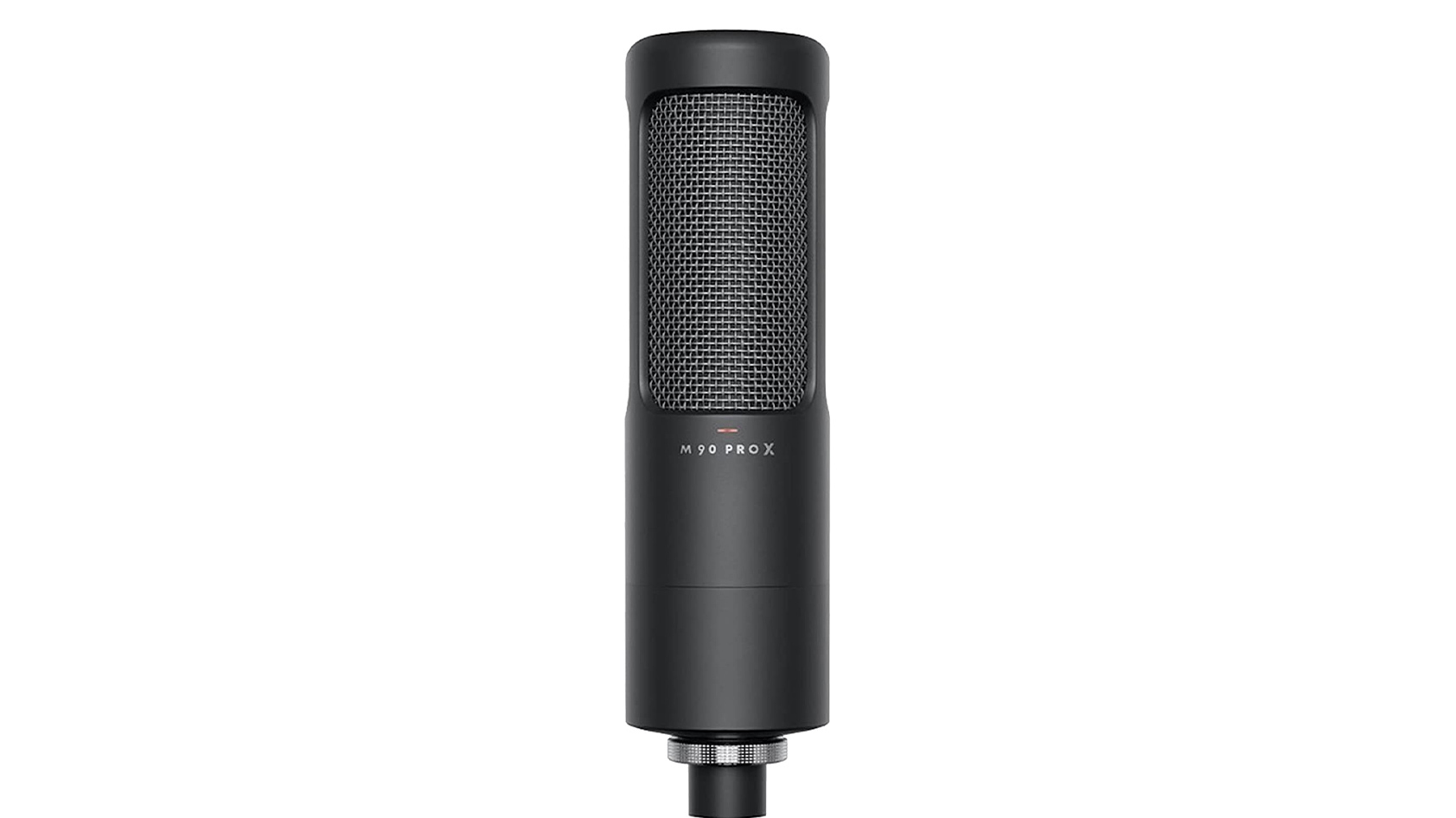
Should you get the Beyerdynamic M90 PRO X or M70 PRO X?
The Beyerdynamic M90 PRO X has a little sister, the Beyerdynamic M70 PRO X. These two mics look very similar, but the M70 PRO X is a dynamic mic, which means it’s best for different applications than the M90 PRO X.
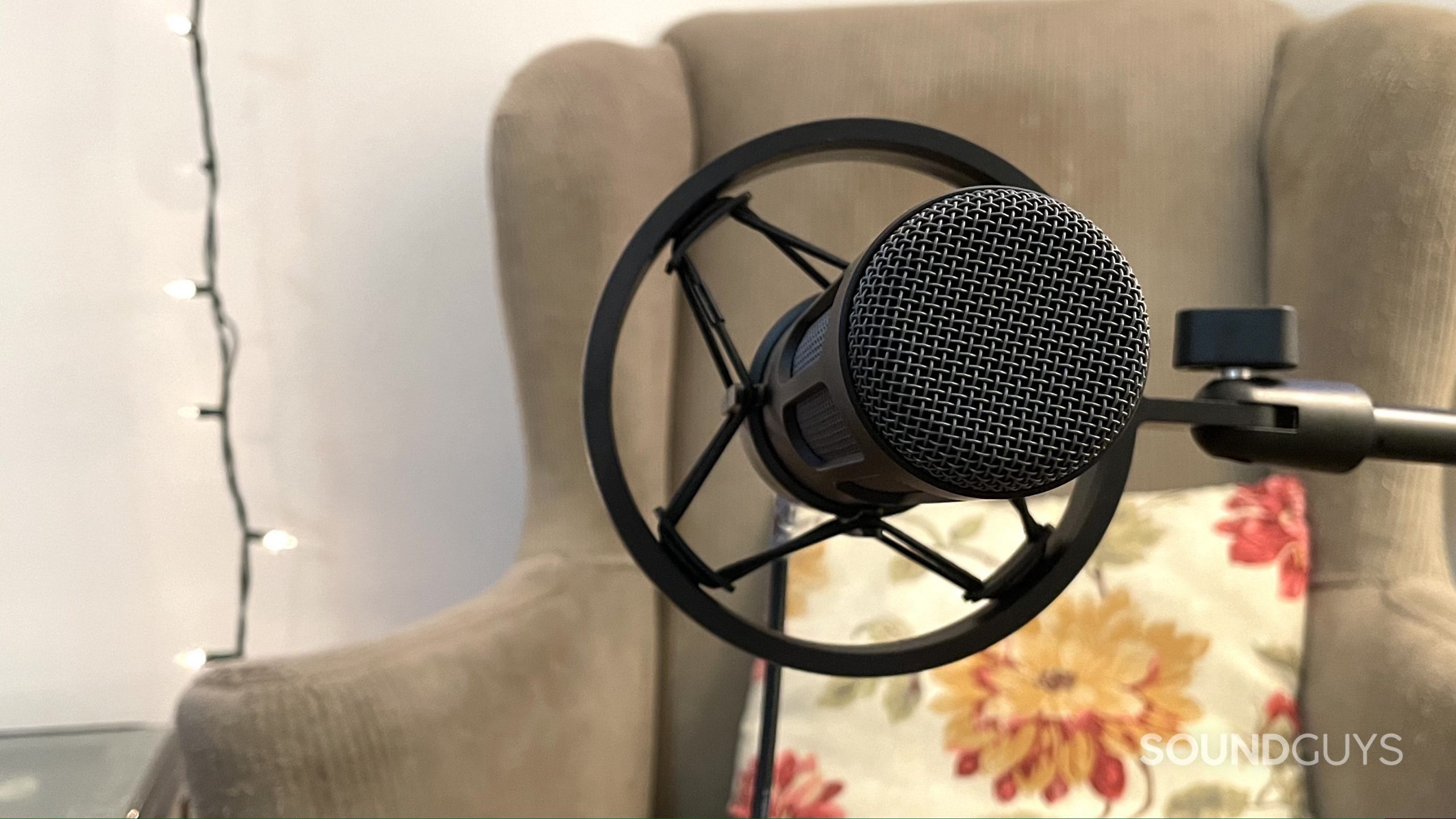
Since the Beyerdynamic M90 PRO X is a condenser microphone, it is more sensitive, and therefore picks up subtle noises with ease. The downside is that the M90 PRO X is more prone to distortion with loud sources. This is why we don’t generally recommend the M90 PRO X or any other condenser mics for applications like close mic’ing drums—these types of instruments are just too darn loud. Because the Beyerdynamic M70 PRO X is dynamic, it is well suited for loud applications, because it can handle high sound pressure levels without distortion. However, it is primarily advertised as a broadcast speech microphone because it rejects off-axis sound very well and has a sound signature designed for voices.
Unlike the M90 PRO X, the M70 PRO X records sound from its top just like most broadcast microphones. It also comes with a pop filter and a shock mount, though because of the placement of the M70 PRO X’s mic capsule I find it more difficult to get the pop filter to stay in the position I want than the M90 PRO X. The M70 PRO X is roughly $50 USD cheaper than the M90 PRO X, but it isn’t a cheap microphone.
What should you get instead of the Beyerdynamic M90 PRO X
While the Beyerdynamic M90 PRO X is a truly great microphone, there isn’t a whole lot that sets it apart from other condenser microphones in its price range. The Rode NT1 and Rode NT1-A are good alternatives. They are both famous for their low self-noise and sensitivity, and they perform similarly to the M90 PRO X.
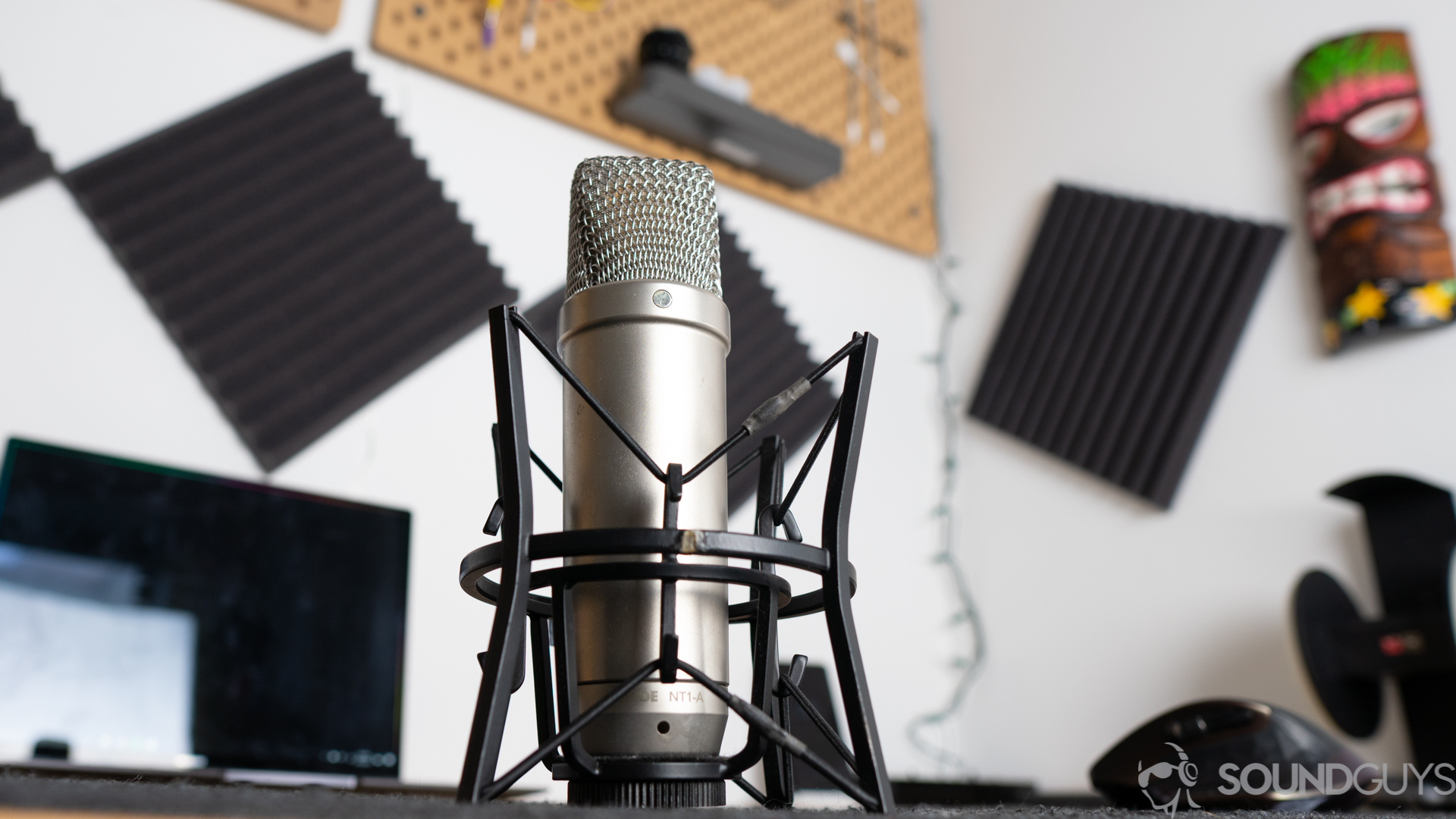
If you’re looking for something more affordable, but you still want a condenser mic, we recommend checking out the Audio-Technica AT2020. It doesn’t have quite as pristine sound quality as the higher-end models, but it’s definitely worth considering if you have the right accessories, like a pop filter and a good USB interface.
Frequently asked questions about Beyerdynamic M90 PRO X
The Rode NT1-A, like the Beyerdynamic M90 PRO X, is a condenser microphone great for recording finer details. It’s more than $100 cheaper than the M90 PRO X, but this isn’t due to it being lower in quality—it’s likely just due to it being a much older microphone. The Rode mic is known for having one of the more neutral-leaning frequency responses of the condenser mics out there, but it’s not too different from that of the M90 PRO X. Both are great mics and are mostly similar, except for their shapes and weights—the Rode mic is 30 grams heavier.
You actually don’t need to turn the microphone on. As soon as you connect it to your USB interface and turn on the phantom power, the mic will start to pick up sound.